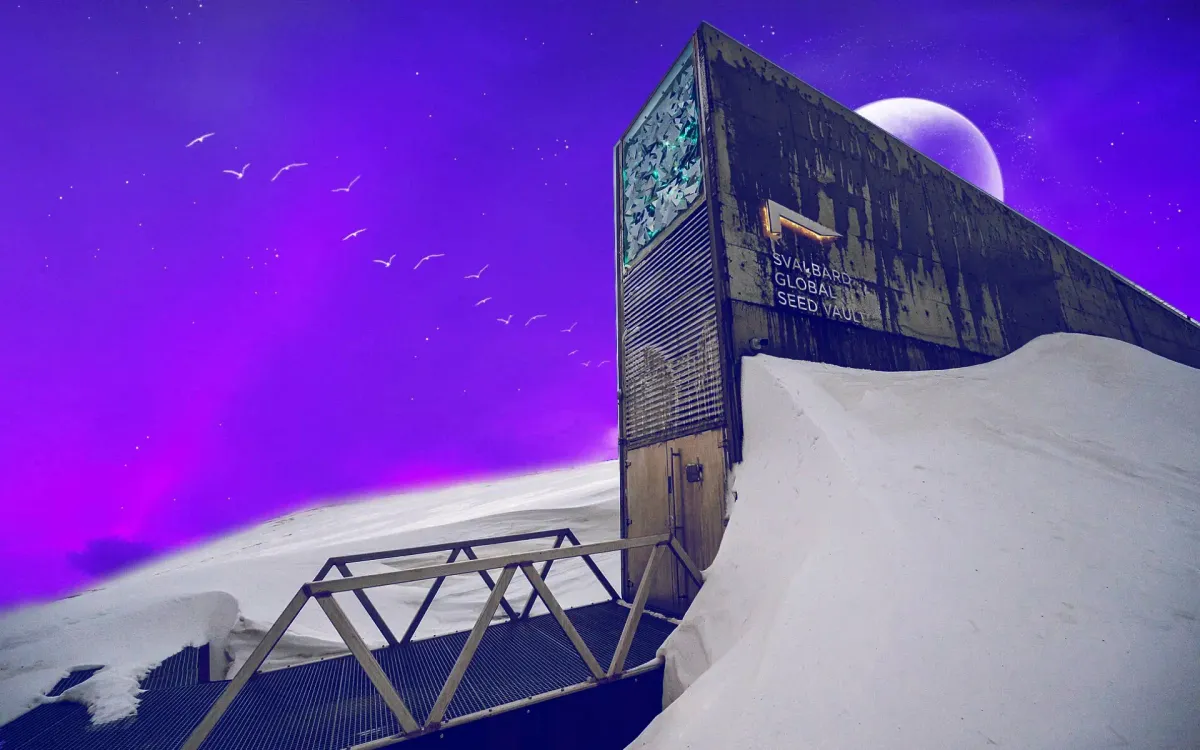Safeguarding the Seeds of Hope
The vault’s mission is simple yet profound — to safeguard biodiversity and ensure that future generations can rebuild agriculture in the face of global crises.

Hidden deep within a frozen mountain on the remote Norwegian island of Spitsbergen lies one of humanity’s most important insurance policies — the Svalbard Global Seed Vault. Often called the “Doomsday Vault,” this facility serves as a secure backup for the world’s crop diversity, preserving the seeds of life against war, climate change, and disaster.
A Safe Haven for the World’s Seeds
Opened on February 26, 2008, the Seed Vault was built 130 meters above sea level and stores duplicates of seeds from gene banks across the globe. It acts as a global safety net for agriculture — protecting against the loss of seeds caused by accidents, equipment failure, political instability, or natural disasters. The vault’s environment is ideal for preservation: permafrost and thick rock ensure that even without power, the seeds remain frozen for centuries.
Funded and owned by Norway’s Ministry of Agriculture and Food, the project cost approximately 45 million Norwegian kroner (US$8.8 million). It is managed through a tripartite agreement between the Norwegian government, the Crop Trust, and NordGen (Nordic Genetic Resource Center).
A Global Effort
The vault’s mission is simple yet profound — to safeguard biodiversity and ensure that future generations can rebuild agriculture in the face of global crises. Storing seeds is free for depositors, and the facility is designed to act as a long-term repository, not a gene bank in itself.
As of June 2025, the vault holds over 1.35 million seed samples, representing more than 13,000 years of agricultural history. These include varieties of rice, wheat, maize, and other essential crops — the building blocks of global food security.
History and Vision
The concept of a global seed vault emerged in the early 2000s when conservationist Cary Fowler and a team of international experts proposed a secure, centralized backup for the world’s seed collections. Their vision gained momentum after the International Treaty on Plant Genetic Resources for Food and Agriculture (ITPGRFA) was adopted in 2001, establishing a framework for shared access to genetic resources.
After feasibility studies confirmed Svalbard’s suitability — due to its remoteness, stability, and natural cold — construction began in 2006. Within two years, the world’s most secure seed storage facility was complete.
Seeds of Hope
The vault has received deposits from nearly every country, including unique varieties from regions affected by conflict or climate change. Notably, researchers from the Middle East sent seed samples to Svalbard to protect them from ongoing wars. In 2018, on the vault’s 10th anniversary, a shipment of 70,000 samples brought the total to over one million accessions.
Even when the COVID-19 pandemic disrupted global systems, the Seed Vault remained unaffected — a testament to its design and autonomy.
Engineering Resilience
Carved 120 meters into sandstone, the facility consists of three storage chambers, each capable of holding up to 4.5 million seed varieties. It’s built to withstand earthquakes, nuclear war, and rising sea levels. In 2016, an unexpected influx of meltwater prompted improvements, including waterproofing and drainage upgrades, completed by 2019 to ensure long-term resilience.
Beyond Seeds
Next to the Seed Vault is the Arctic World Archive, a similar initiative preserving humanity’s digital knowledge on specially designed film that can last up to 1,000 years. Together, these archives make Svalbard a symbol of preservation — a time capsule for civilization itself.
Cultural and Scientific Legacy
The Svalbard Global Seed Vault is more than a bunker for plants — it’s a statement of global cooperation. At a time when biodiversity is under threat, it stands as a reminder that protecting the foundations of life requires foresight and unity.
From the Arctic cold, the seeds of the past sleep — waiting for a future that might depend on them.
🌱 Website: seedvault.no
🧊 Location: Longyearbyen, Spitsbergen, Norway
📦 Capacity: Up to 4.5 million seed varieties
💡 Mission: Preserve global crop diversity for generations to come





